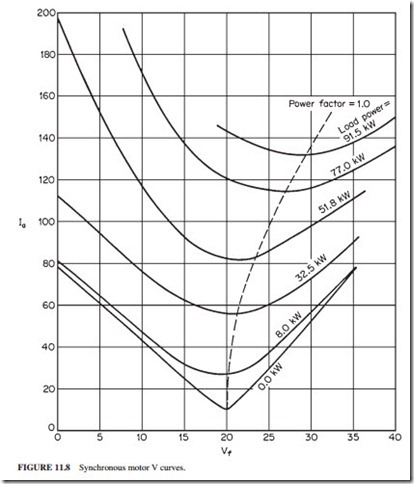EXCITATION OF A SYNCHRONOUS MACHINE
The excitation characteristics of a synchronous machine do not vary whether it is operated as a motor or as a generator. Figure 11.8 illustrates the excitation characteristics of a synchronous motor (the variations of armature current versus the field voltage) assuming a constant armature voltage. The power factor associated with a synchronous motor is determined based on “look- ing into the motor” from the terminals. In the underexcited region (i.e., to the left of the minima of the V curves in Fig. 11.8), the motor will be an inductive load (a lagging power factor load). In the overexcited region (i.e., to the right of the minima of the V curves), the motor will be a capacitive load (i.e., a leading power factor load). Thus, a synchronous motor can be used to deliver reactive power while consuming real power. The power factor associated with the two regions of the V curves shown in Fig. 11.8 (to the left and right of the minima of the curves) would be reversed if the machine were a synchronous generator. Figure 11.9 illustrates that a synchronous machine can operate in all four quadrants of the real power–reactive power plane.
